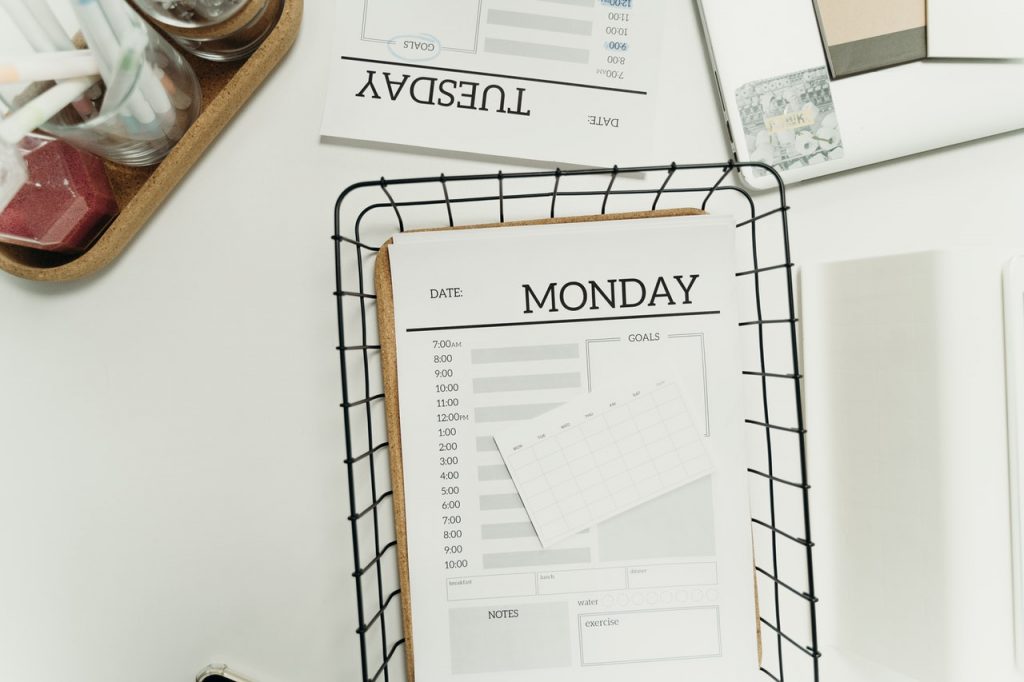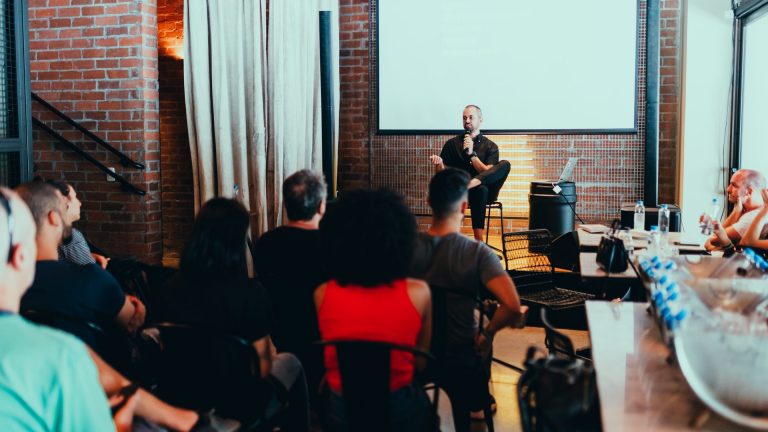- The purpose and ideal cadence for regular workshops
- The most effective way to run a workshop
- Who should attend a workshop and why
- What should be communicated in a workshop
- How to adapt on the fly
When Acquira’s team first walked into the offices of the Southeastern HVAC company, it was clear that there was a lot of work to be done.
The company had been in the same family for generations and had proven itself profitable despite neglecting opportunities for greater scale and profit. When it was acquired, the business was showing total revenues in excess of $10.5 million and a net income of more than $3 million.
In a previous article, we discussed how we leaned into the company’s culture to help it expand. We helped develop a leadership team, implemented a digital marketing strategy, added technology, and started holding regular leadership meetings to ensure that goals were set and reached.
Once each of those elements was in place the positive results were almost instantaneous. However, before we could reach that point we needed to communicate why these strategies were important and how they should be implemented.
The most efficient way to do this was through regular workshops.
During the first year of our involvement with the business, we held workshops with the leadership team once a quarter. Workshops are an excellent way to disseminate information but, more importantly, they are great at getting buy-in for new ideas.
Regular workshops are part of our ACE (Acquira Certified Enterprise) Integration Framework – a management system designed to integrate, systematize, and grow newly acquired businesses, with a special emphasis on culture, systems, and servant leadership. These workshops help us distill the information and share it with the leaders of the company.
How To Run Workshops?

Establishing The Cadence Of The Workshop
One definition of the word cadence is “the flow or rhythm of events, especially the pattern in which something is experienced.”
An effective workshop should follow a reliable rhythm and pattern so that, with each passing workshop, the attendees know what to expect.
You also need to ensure that you don’t overwhelm folks with information. If you jam a workshop full of information, concepts, and games, people are likely to get overloaded, which will lead to one of the nightmare scenarios we discuss below.
The cadence should largely be defined by the presenter or leader of the workshop, but generally you want to ensure that there is an introduction, regularly scheduled breaks, an hour for lunch, and lots of activities to keep people engaged.
Above all, though, the rhythm of all workshops should be built around OKRs. OKR stands for “objectives and key results” and they are a goal-setting framework used by teams to define measurable goals and track their outcomes.
Each OKR comprises of an objective and three to five key results. An objective is a significant, concrete, and clearly defined goal. A key result is a measurable success criteria that can be used to track the achievement of that goal. Besides being concrete and well defined, objectives must also be able to inspire the team that is working towards them. These objectives are supported by initiatives and activities that are developed to achieve the objective. Key results must be measurable in some way. They must either be tied to a numerical value (ie: total revenue or total earnings) or a 0-100% scale. This is so decision-makers and leaders can determine if those involved in an initiative are successful. There is no “gray area” when defining a key result.
In a two-day workshop, a large chunk of the first day is spent going over the previous OKRs and looking at what needs to be changed. Day two is spent discussing what issues were raised during day one, how those issues should be addressed, what capabilities need to be built or acquired to make improvements, and finally implementing new OKRs for the period ahead.
When OKRs are first introduced, we recommend setting them for a 60-day period. Once the leadership team is more disciplined with the concept, you should extend the duration of the OKRs to 90 days (one quarter).
Designing The Workshop
When you first approach the workshop, you should ask yourself two questions:
- “What is the outcome that I want for this workshop?”
- “What is the anti-outcome?”
You should be aware at all times of what you want people to take away from the workshop. For example, you may want to improve the financial literacy of your leadership team. Every step or lesson within the workshop (that isn’t a team-building exercise) should be designed with that goal in mind. Every handout or document should move you closer to that outcome.
On the other hand, you should also be aware of what the anti-outcome for the workshop would be. If your goal is to improve financial literacy, the anti-outcome would likely be that people leave feeling more confused than when they entered the workshop.
Throughout the workshop, the person leading the workshop should constantly be asking themselves if they’re getting closer to the outcome or closer to the anti-outcome. The anti-outcome is basically a nightmare scenario – it means the entire endeavor was a waste of time and money and may actually set the company back. People must not be left feeling overwhelmed, stupid, or untrusting.
Who Should Attend A Workshop?
All members of the leadership team should be present at a given workshop. These are the people who will help set the goals for the company, learn the new material, and disseminate it to their employees.
On top of teaching and learning, workshops are an excellent resource for cultivating culture within an organization. Management can share the company’s mission, vision, and values with the leadership team, and the leadership team then shares that mission, vision, and values with the people they oversee.
Create An Itinerary

Before any workshop, it’s important to create an itinerary. When Acquira’s Integrators hold workshops, they are held over a two-day span and they cover a lot of information.
By providing everyone with an idea of what they’ll be learning ahead of time, you won’t have anyone surprised. It also allows people to prepare ahead of time if they wish.
How To Ensure Engagement
Trust isn’t intrinsic within a business, and the first few workshops should be used to help establish confidence in management and get buy-in from the leadership team.
To run an effective workshop, you should avoid being too formal and didactic. Rather, a casual and hands-on approach should be taken to ensure that everyone is comfortable and receptive.
You never want to simply stand up and present an idea. This just leads to bored attendees and no one will retain any information. Instead, the person leading the workshop should avoid talking as much as possible. They should ask questions, but they need to be sure to listen to the answers and lead a dialogue so that everyone can speak and be heard. When they do speak, the leader of the workshop should strive to be Socratic in their dialogue to allow for a free flow of ideas.
The Socratic method has a rich history that stretches back millenia, but at its most basic it is a cooperative argumentative dialogue that relies on asking and answering questions to stimulate critical thinking and draw out ideas.
In order to ensure that people aren’t bored, keep things interactive. There can be handouts but try to avoid using screens. You want people to move around and get involved.
For example, at one of the workshops that Acquira’s team held with the HVAC company, the Integrator had everyone team up into pairs in order to look at a P&L (profit & loss) report from the company.
The pairs helped each other understand the report, and discussed it at length. This started ideas flowing within each team of two that they brought back to the larger group. The Integrator then led a discussion on the P&L to resolve any questions that people may have had.
The handout (the P&L report) was simply a tool to help people start communicating and get ideas flowing.
What Should Be Communicated At A Workshop?
The emphasis should always be on goals and numbers. These are how you’re going to measure whether these workshops and the OKRs that developed there were successful or not.
However, try to find a balance between practical and theoretical. Make room for ideas that can help the team improve as a whole. At Acquira’s workshops, we make a point of teaching concepts like the Flywheel to help instill a deeper understanding of why certain decisions are made and how to communicate those decisions throughout the company.
How To Adapt on The Fly
When running a workshop, it’s important to be flexible. If the workshop leader is aware of potential “nightmare scenarios” they will have to make adjustments to avoid those.
If people start to get bored, overwhelmed, or aren’t responding to something you had planned out, you must make adjustments in the moment to ensure everyone remains engaged.
If people start to get bored, overwhelmed, or aren’t responding to something you had planned out, you must make adjustments in the moment to ensure everyone remains engaged.
In order to do this, you should try and be aware of what motivates the team and adapt as necessary.
Keep It Fun
Weave fun into the workshop. This can include silly quizzes (we like Kahoot). The point is to get people laughing. It helps them relax and feel more comfortable – and more open to receiving new information.
If possible, try and get the lunches catered so everyone can eat together. This helps build a sense of camaraderie. For the end of the workshop, plan a fun event. At Acquira, we’ve gone axe throwing, played top golf, and solved escape rooms. These sorts of events really help bring the team together.
Conclusion
Maintaining culture, disseminating ideas, and supporting your leadership team are some of the best investments you can make in a company that you want to see grow and succeed. Communicating those themes and concepts to people is difficult, but a well-planned workshop can make all the difference.
Have you had any particularly bad experiences with a workshop in your professional life? Let us know in the comments below.
We'll be rolling out the ACE Framework in the coming weeks, but to start your business acquisition journey now schedule a call with us today.
Key Takeaways
- Use workshops to establish and reinforce the company’s culture.
- In OKRs, an objective is a clearly defined goal; a key result is a measurable success criteria used to track the achievement of that goal.
- Think about the desired outcome of the workshop, but also the anti-outcome.
- In order to ensure that people aren’t bored, keep things interactive.
- Keep things fun and be adaptable.
Acquira specializes in seamless business succession and acquisition. We guide entrepreneurs in acquiring businesses and investing in their growth and success. Our focus is on creating a lasting, positive impact for owners, employees, and the community through each transition.



